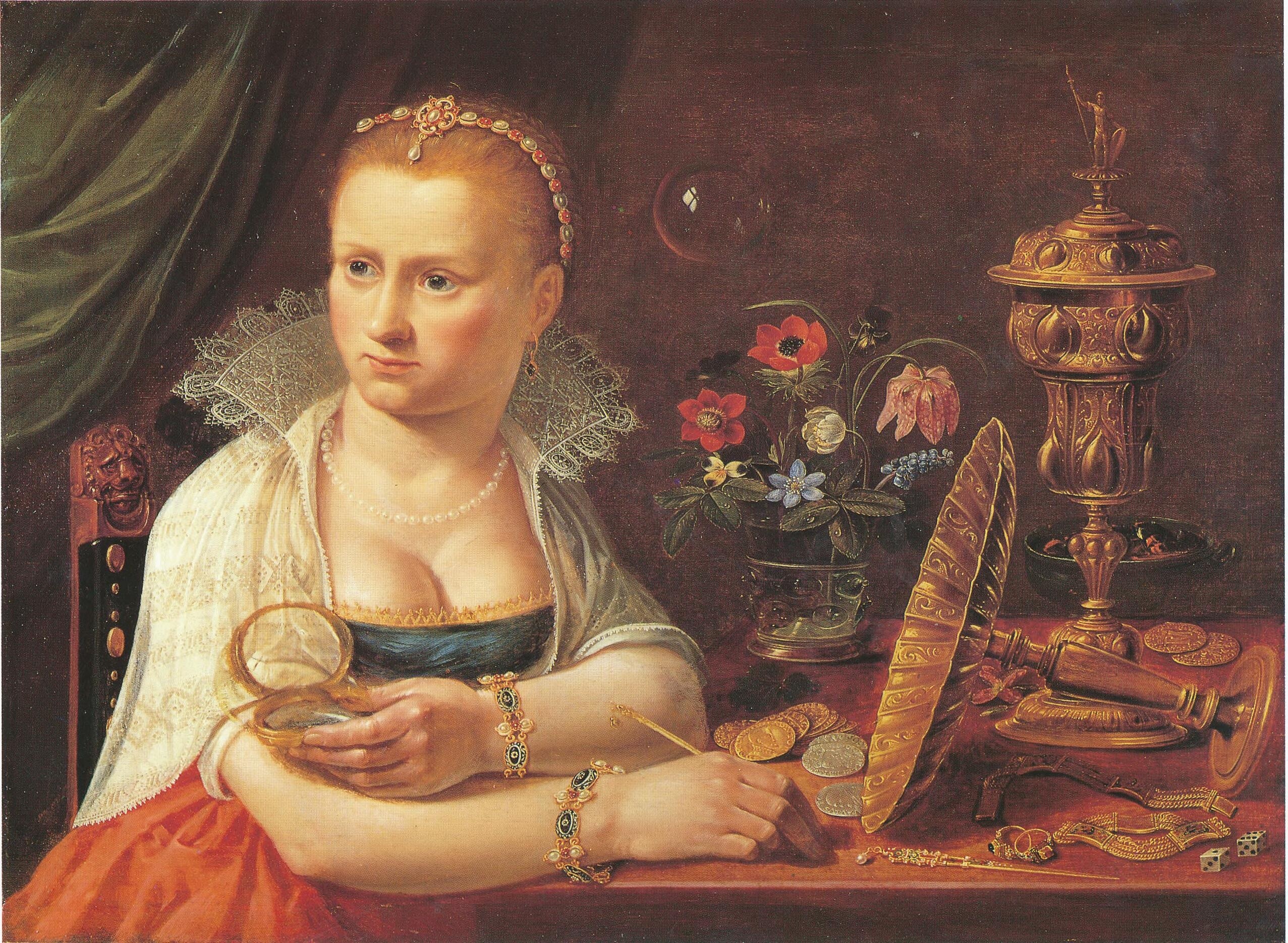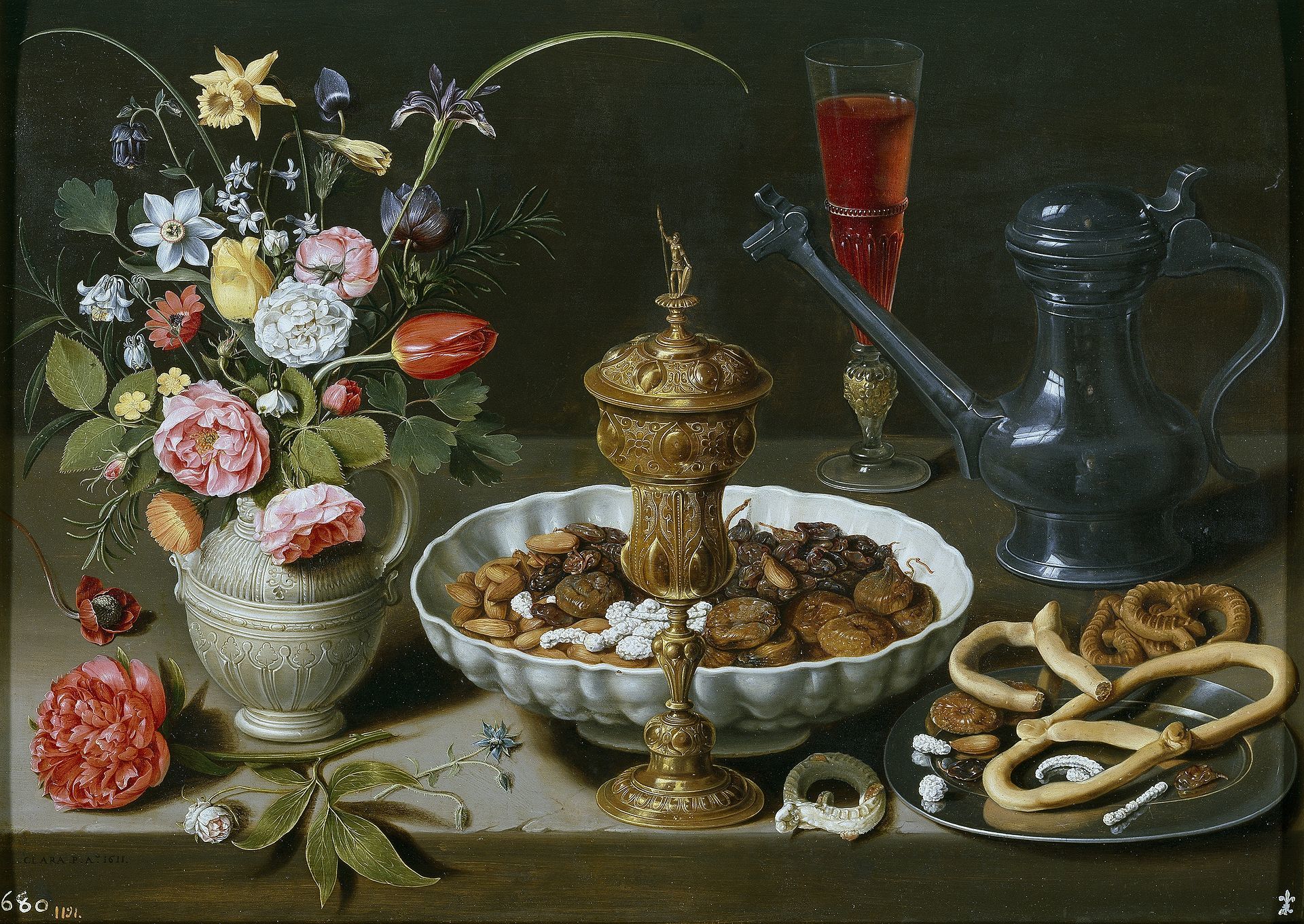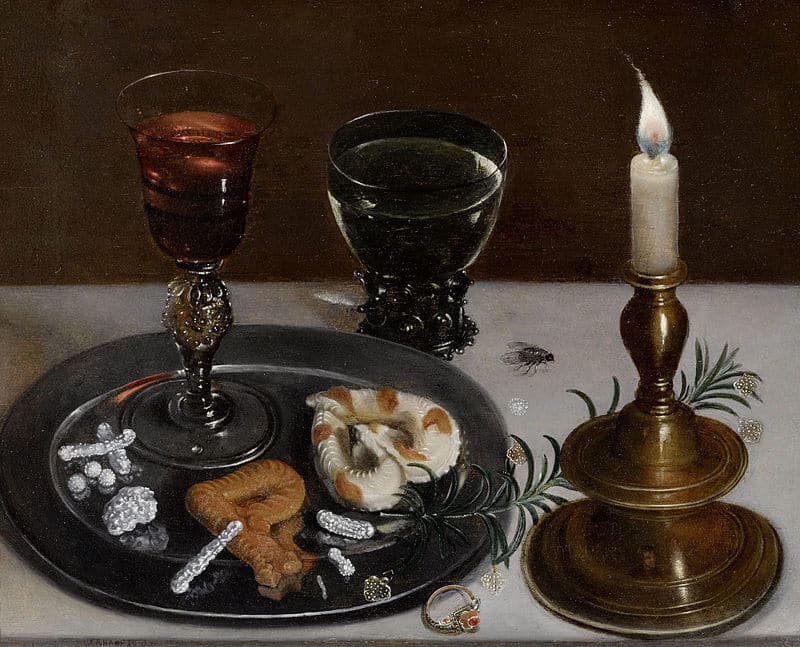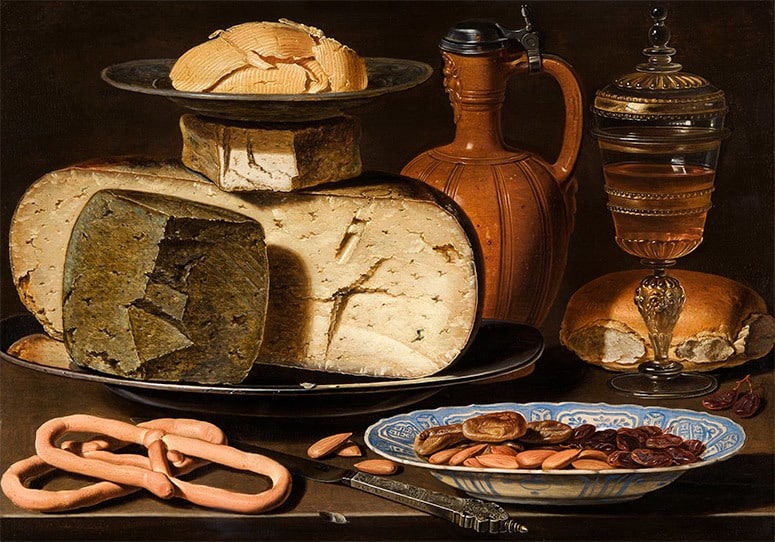In the past, female artists have not always been valued. Most were overshadowed by their male counterparts, excluded from education and the art world, so that their names never appear in the history books. Heleen Debruyne takes them out of oblivion and gives them the honour they deserve. In the second episode we present you Clara Peeters: ‘In an era given over to the baroque, she gained success with her hyper-realistic paintings and turned everyday objects into works of art.’
 Vanitas, possibly self-portrait of Clara Peeters, ca. 1618
Vanitas, possibly self-portrait of Clara Peeters, ca. 1618© private collection
Clara Peeters is a riddle. We know only that she was born in Antwerp, that her godmother was Spanish and that she worked in both Flanders and Holland. When she signed her first painting she was just thirteen years old. Beyond that, we can only bring her to life by looking at her work: all still lifes done between 1607 and 1621. Still lifes so realistic that it almost seems possible to reach out and grab the shining cheeses, fish, cakes and fruit from the canvas.
Today, museums and old palaces are covered with sumptuous still lifes but in the early 17th
century, Peeters’ work was quite innovative. Talented, creative women were not admitted to art schools. They did not have the opportunity to draw from living models or learn about mythology or religion, so they learned by sketching what they saw around them every day. Plants. Fruit. Scenes from the kitchen. Their work was labelled as homely; as a pastime, not as art. The people of early 17th-century Antwerp thought of art as the compositions of artists like Rubens: saints, history, allegory, Greeks nymphs – those were what ‘masters’ painted.
 Clara Peeters, Still Life with Flowers and Delicacies, 1611
Clara Peeters, Still Life with Flowers and Delicacies, 1611© Museo Nacional del Prado, Madrid
And yet, Clara Peeters made her way out of the kitchen. In an era given over to the baroque, she gained success with her hyper-realistic paintings and turned everyday objects into works of art. Olives, cheeses, polished silver, the flickering flame of a candle, flowers in various states of freshness or decay: with these ingredients she experimented like a true master with colour, form, texture and composition. Did she find inspiration in the new realism that was flowing in from Spain? Did she find inspiration in Holland? Or were the Dutch Masters, in all their simplicity, inspired by her? We have no way of knowing.
Antwerp was one of the greatest exporters of visual art in the 17th century. Art-conscious contemporaries such as Carel van Mander or Samuel van Hoogstraten looked down on still lifes or ‘banquets’ but this did not stop Clara from making a name in the international art trade – yet almost none of her paintings are held in Antwerp now. She often painted in large format, which suggests that her paintings were expensive. Throughout Europe, art lovers and even royalty used her ‘breakfasts’ or ‘banquets’ to decorate their private quarters.
 Clara Peeters, Still Life with Dainties, Rosemary, Wine, Jewels and a Burning Candle, 1607
Clara Peeters, Still Life with Dainties, Rosemary, Wine, Jewels and a Burning Candle, 1607© private collection
There is a good chance that the paintings didn’t only increase their appetites (literally) but that they found a new meaning in the images. Take, for example, Peeters’ earliest known work, Still Life with Dainties, Rosemary, Wine, Jewels and a Burning Candle done in 1607. There, it is easy to find a deeper, more symbolic meaning. The burning candle stands for the passage of time, while the fly on the tablecloth signifies impending death or decay. The sprig of rosemary symbolizes eternity because it retains it scent for a long time and is also used as a herbal remedy for memory loss. Other still lifes encouraged viewers to contemplate their own deaths – fruit and flesh might be luscious and ripe today, but a week later both will be crawling with maggots.
However, recent research suggests that Clara might not have meant to suggest such a negative vision of life and death. The painting might symbolize marriage. On the tablecloth lie golden jewels that were used in the 17th century to decorate the banquet table and were later given to the bride. There is a wedding ring typical of the period on the table and the sprig of rosemary could as easily stand for eternal fidelity. The dishes on the table are typical of 17th-century wedding feasts. And, in another work Clara again used a sprig of rosemary as the garnish on a wedding cake. Such a cake has much more meaning than the fluffy white monstrosities served at weddings today.
 Clara Peeters, Still Life with Cheeses, Almonds and Pretzels, circa 1615
Clara Peeters, Still Life with Cheeses, Almonds and Pretzels, circa 1615© Mauritshuis, The Hague
The cheeses that Peeters so loved to paint are much more than dairy products. Did she want to honour the rich agriculture of the Netherlands? On a painting from 1615, the cheeses are piled next to a pretzel, some unleavened bread and a selection of dried fruit and nuts, all foods for periods of fasting.
Cheese, however, was strictly forbidden on fast days. The canvas might, thus, be illustrating the conflict between fasting and carnival, which could in turn be a statement of religious politics: the Reformation broke with the strict fasting requirements of the Catholic church. In the 17th century cheese was a bit of mystery because no one really understood precisely how milk became cheese. This might sound laughable to us today, but cheese was often used at the time as a metaphor for the Creation. However we wish to interpret it, even her depictions of something as simple as cheese raised Clara Peeters far above the everyday.
 Clara Peeters, Still Life with Crab, Shrimps and Lobster, c. 1635 - 1640
Clara Peeters, Still Life with Crab, Shrimps and Lobster, c. 1635 - 1640© Museum of Fine Arts, Houston
She must have been aware of her talent. On at least eight of her paintings she included images of herself. Those who look closely at the paintings can see, as reflections in cups and glassware a miniscule woman, sometimes with an artist’s palette in hand, concentrating on her work. This is reminiscent of the tiny depiction of Jan van Eyck in his Arnolfini Portrait. ‘Here I am’, she seems to want to say. ‘And I am also a master of the human form. I have chosen to do something different.’
Clara Peeters was a pioneer of the still life genre. Afterwards, still life painting became even more popular… and pompous. Her work, which she signed with CP, was for a long time attributed to a man called Pieter Claesz. The typical misconception in art history that if a work is ‘that good – it could not have been painted by a woman!’ – has in the meantime been corrected. In 2016, Peeters’ ‘banquets’ were shown in an overview exposition at the Prado in Madrid, the first solo exhibition of a female artist at that museum.












